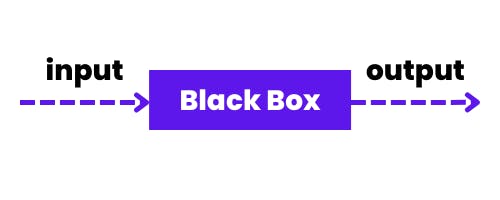Hi! We all know that tests are important, but do you know about black box testing, white box testing, and mutation testing?
This article helps you understand a bit more about that.
Black Box testing
Black Box testing is when the functionalities of an application are tested without knowing the internal code structure, implementation details, and internal paths, hence the name black box.
Black Box Testing mainly focuses on the input and output of software applications and it is entirely based on software requirements and specifications. It is also known as Behavioral Testing.

We don't need to have access to the internals, we just need to identify areas in which the code doesn't work accordingly to the specification.
How to do Black Box testing
We need to divide the testing into generic cases, like groups of testing. There's no need to test every case, just divide the cases into groups, and then pick the most relevant ones. This is also called Equivalence Class Testing (Explained later in the article).
Some generic steps are as follows:
- Initially, the requirements and specifications of the system are examined.
- The tester chooses valid inputs (positive test scenario) to check whether the System Under Testing (SUT) processes them correctly. Also, some invalid inputs (negative test scenario) are chosen to verify that the SUT can detect them.
- Tester determines expected outputs for all those inputs.
- Software tester constructs test cases with the selected inputs.
- The test cases are executed.
- Software tester compares the actual outputs with the expected outputs.
- Defects if any are fixed and re-tested.
Some tips for Black Box testing:
- Do a table with group cases like input conditions, valid classes, invalid classes, and descriptions.
Black Box Testing Techniques
Equivalence Class Testing: It is used to minimize the number of possible test cases to an optimum level while maintaining reasonable test coverage.
Boundary Value Testing: Boundary value testing is focused on the values at boundaries. This technique determines whether a certain range of values is acceptable by the system or not. It is very useful in reducing the number of test cases. It is most suitable for systems where input is within certain ranges.
Decision Table Testing: A decision table puts causes and their effects in a matrix. There is a unique combination in each column.
White Box testing
Working as a counterpart to Black Box testing, White Box testing doesn't hide the internal code structure. In White Box Testing the code is visible to testers, and it's important to develop the tests.
Also, White Box testing involves testing the code for internal security, smelly code, and broken or poorly structured paths.
This test can be done using Unit Testing and one of the goals is to verify a working flow for an application. It involves testing a series of predefined inputs against expected or desired outputs so that when a specific input does not result in the expected output, you have encountered a bug.
White Box - Code Coverage
Code Coverage: Eliminates possible gaps in a test case suite, identifying areas that are not exercised by a set of test cases.
Advantages of White Box Testing
- Code optimization.
- Automatization.
- Testing coverage.
- Testing can start early in SDLC even if GUI is not available.
Disadvantages of WhiteBox Testing
- Complex and expensive.
- White-box testing is time-consuming, bigger programming applications take the time to test fully.
Black Box VS White Box
The main differences are that the Black box testing hides the internal structure of the program or the code, is mostly done by testers, and usually is referred to as external software testing. Also, known as functional testing, so no knowledge of programming is required, being applicable to higher levels of testing. In comparison, White box testing tests the internal structure of the code is mostly done by developers, so this requires a knowledge of the implementation and coding. Also, being made by developers, it's the base of software testing, involving the logic testing of the software, consuming a lot of time from the developers.



